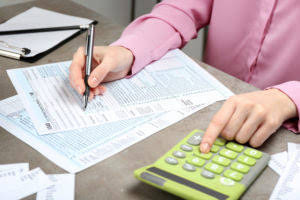
Once you discover an uncashed check, also known as an outdated or stale check, should you cash it? That can be a tricky question because of the confusion surrounding the shelf life of a check. A money-order issuer may charge fees on the order if enough time passes. Use this information to create a policy on owner contact and state remittance for different categories of uncashed checks.

What Is a Stale Check?

In addition, post-dating a check can lead to confusion and may result in overdrafts and fees. In the following guide, we’ll explore what it means when a check is postdated, answer frequently asked questions, and discuss some safer and more effective options. While writing a postdated check might seem like a good way to align your check payment with your cash flow, it may not work out the way you expect. And if you discover you have an outdated check, contact the issuer or financial institution. Checks become outdated mainly as a way to protect the account holder.
Do Cashier’s Checks Clear Immediately?
This type of check is often required for large transactions, such as buying a car or house. The back of the check has an endorsement line for the payee’s signature when they are cashing or depositing the check. The receiving bank often stamps the back with a deposit stamp at the time it is deposited or cashed, after which it goes for clearing.

What are the risks of dealing with old checks?
- Do NOT call the number printed on the check without first verifying that number.
- The validity period for a check often depends on whether it’s a personal check, business check or cashier’s check.
- It simply means the financial institution has the option to refuse the check.
- Every state in the United States has what are called escheatment laws that require a business to hand over unclaimed property after a specific period.
- As per the law, usually, the 6-month time frame for check clearance is applied to personal and business checks in the U.S.
- This could cause your account to be overdrawn, and you might also have to pay a fee unless you issue a stop-payment order.
The use of checks allows two or more parties to make a monetary transaction without using physical currency. Instead, the amount for which the check is written is a substitute for physical currency of the same amount. Checks essentially provide a way to instruct the bank to transfer funds from the payor’s account to the payee or the payee’s account. Yes, even a check that has VOID written in big letters on the front can be cashed. The Social Security Administration returned the check, saying she owed nothing. Instead of calling the Treasury department, verify the check with the tax preparer (where possible) AND with the bank issuing the RAL check.

Even though banks or other financial institutions may allow you to deposit or cash it, they’re not obligated to do so by law. Other checking account fees can include a monthly service fee, a per-check fee (a charge for every check you write), a check printing fee, and a returned deposit item fee. A returned deposit item fee is charged when you deposit a check in your account that bounces. In addition to the standard personal check, types of checks include certified checks, cashier’s checks, and payroll checks, which are all used for different purposes. When you pay someone by check, your payee must deposit or cash the check to collect the payment. The payee’s bank will request money from your bank, and the transaction concludes when your bank sends funds to the payee’s bank.
The Bankrate promise
Each state has its own requirements, such as a minimum dollar amount or a minimum length of dormancy. A stale check is a check that remains undeposited or uncashed long after the date on which it was issued. It may be too old to be processed by a bank, credit union, or other financial institution. A stale check is also referred to as a “stale-dated check” or an “expired check.” The length of time that a check is considered to be valid may vary from state to state.
- It will also prevent the person from making any deposits, as all transactions will be effectively stopped or “frozen” until the account is unfrozen.
- We do not endorse the third-party or guarantee the accuracy of this third-party information.
- Yes, even a check that has VOID written in big letters on the front can be cashed.
- Remember, each bank has its own policy and can use its own discretion when helping you resolve this matter.
- If you have, you might have thought about writing a check with a future date, hoping this will prevent it from being cashed early.
Bonnie Honeycutt is a New York Times best-selling editor who also works as a freelance journalist, ghost writer, and writing coach. She currently works full-time as a senior editor at a major book publisher and resides in Nashville, Tennessee. To get the best possible experience please use the latest version of Chrome, Firefox, Safari, or Microsoft Edge to view this website. A lawyer can help you understand your rights and what actions you can take to protect yourself. If you have any questions or concerns, it’s always best to speak with a lawyer before taking any action.
- It’s important to know that when you get a check it may not be valid forever.
- The content on this page provides general consumer information.
- In basic terms, a check becomes stale if it has been in one’s possession for 180 days or more and has not been cashed or deposited.
- Check usage surged in the 1950s as the check process became automated and machines were able to sort and clear checks.
- Accumulating a balance that can’t be paid off within the grace period can lead to high interest charges, which can increase financial strain.
Do You Want Help Opening Bank Accounts?
Checks are a useful financial tool that make payments and money transfers more convenient and potentially safer than cash. Different checks are designed for different purposes and for different risk levels. Learning how to use a check correctly, including how to void a check, can provide you with a secure payment method that you may need or prefer to use in certain circumstances. A cashier’s check is guaranteed by the banking institution and signed by a bank cashier, which means the bank is responsible for paying the funds.

Next steps: Ways to avoid a check going stale
- Modern checks, as we know them today, became popular in the 20th century.
- With $0 minimum to open online and Low Cash Mode® to help avoid overdrafts.
- In addition, post-dating a check can lead to confusion and may result in overdrafts and fees.
- Banks are still allowed to process an older check, if the institution believes the funds are good.
- In addition to creating a new check, you should also issue a stop payment on the old check.
- In particular, they have expertise in banking for foreigners, non-residents, and both foreign and offshore companies.
Both checks are guaranteed by the bank, which makes them more secure. With a stop payment notice, the bank employee who is responsible for handling your accounting transactions ensures that what does stale dated mean on a check the check becomes void. It prevents the other business owner who is on the client-side of the table from cashing old and new checks, thereby maintaining transparency in the business.
An important point here to note is even if these checks become stale, it does not imply they have become void and cannot be encashed. The only condition in this situation is the financial institution has a right over the refusal of the check. In basic terms, a check becomes stale if it has been in one’s possession for 180 days or more and has not been cashed or deposited. After six months from the day a check is issued, checks may not be deposited into one’s checking account. If a person has been given a personal or business check, it is important to understand that the check has a limited period during which it is valid. Most personal checks have a maximum time frame in which they can be presented to a bank before they become stale or invalid.
